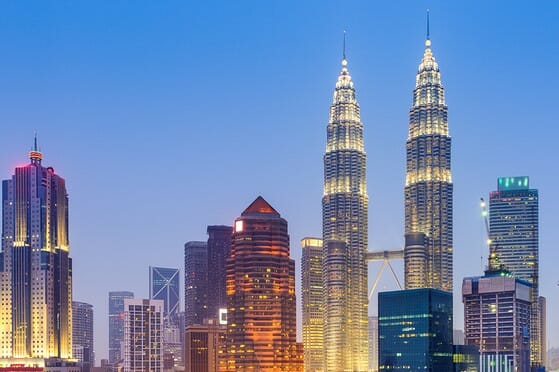Since Jan 23, the government has taken steps to rationalise subsidies in stages. First, it has already reduced subsidies for large companies and is planning to scale back assistance for T20 households with high electricity consumption.
Second, the government is also expected to improve diesel subsidy spending which saw leakages amounting to RM10 billion. Collectively, the subsidy retargeting on electricity and diesel will give rise to RM20 to 25 billion in savings, said Hong Leong Investment Bank (HLIB) in a recent report.
For perspective, this accounts for 1.1 to 1.3% of gross domestic product. For a more comprehensive adjustment to the subsidy programme, the government is also in the midst of developing the Central Database Hub (PADU) which aims to combine more socio-economic information to arrive at household net disposable income metric, instead of mainly relying on narrow identification of B40, M40 and T20 household income.
On growth drivers, the Minister of Economy said the restructuring of energy sector to include renewable energy into the energy mix will be prioritised with RM637 billion of investment needed until 2050.
The government is consolidating its fiscal position by retargeting subsidy plans. The government has implemented a subsidy targeting programme in stages. Starting from Jan-23, the government has already reduced subsidies for large companies, with the exception of companies in the agriculture sector and SMEs.
Along with this initiative, Prime Minister Anwar Ibrahim had also stated that T20 households with high electricity consumption will see a tariff increase. This is anticipated to affect 10% of total households, implying that 90% of households will continue to enjoy current subsidies.
Secondly, the government is also planning to improve diesel subsidy spending. Based on Anwar’s press conference on 15th May, government will ensure vehicles that transport diesel supplies from gas stations or skid tanks are equipped with a “fleet card” system to monitor diesel consumption and avoid leakages that has an estimated outflow of RM10 billion.
A review showed that the use of diesel jumped 37.7% at 6.1 billion litres in 2019 to 8.4 billion litres in 2022 while the number of registered vehicles that use diesel increased by a much smaller rate of 2.4% from 2.08 million in 2019 to 2.13 million in 2022.
In the future, Anwar said the government is detailing the types of vehicles that will enjoy diesel subsidy to avoid misuse. Consequently, the subsidy retargeting on electricity and diesel will collectively give the government RM20 billion to 25 billion. For perspective, this accounts for 1.1-1.3% of gross domestic product in savings.
These savings could be rechannelled towards assisting the vulnerable community, development spending to expand the country’s future growth potential and reduce fiscal deficit to strengthen the fiscal position.
“We think that this is a positive step as it is in line with the government’s intention to consolidate its medium-term fiscal position under the 2023-2025 Medium-Term Fiscal Framework to reach the average fiscal deficit of 4.1% of gross domestic product from 5.0% in 2023,” said HLIB.
From the credit rating agency’s perspective, this will also be an encouraging step as the government actively implements measures to restore fiscal settings to a firmer footing.
Also, PADU is expected to be ready in Jan-24. Minister of Economy Mohd Rafizi Ramli also said this database could be helpful to determine and expedite the framework for targeted subsidy rationalisation for petrol RON95 if need be.
“We think that this is a positive step in ensuring a more effective social safety net programme as well as targeted subsidies as the government will not merely rely on identification of vulnerable households through the B40, M40 and T20 categories but more comprehensive manner which will take into account the number of dependents, location and outlays to arrive at household’s net disposable income,” said HLIB.
The government intends to diversify into new growth areas, such as the renewable energy sector. In the past month, the government has announced several new policies, including allowing the export of renewable energy across borders and allocating RM50 million to accelerate the installation of solar panels in government buildings.
In the near future, HLIB understands that the government will also announce initiatives to facilitate the use of solar energy in domestic residences, encouraging more households to adopt solar facilities. This is also aligned with government’s decision to float electricity prices for commercial and T20 households who have high usage, allowing households to offset some of the higher cost of tariff increase.
Globally, Malaysia had also formally joined the Asia Zero Emission Community (AZEC), an energy bloc consisting of Japan, Australia and all ASEAN countries to drive energy transition from hydrocarbon sources to clean and renewable energy sources.
As the country moves forward, the government wants to diversify into higher-value added sectors such as renewable energy and technology. Currently, renewable energy contributes 23% to Malaysia’s energy mix, largely from hydropower generation.
Going forward, the government intends to increase the share to 70% by 2050 with excess to be traded with neighbouring countries. While the focus is on renewable energy, this is also expected to entail new infrastructure investment in the construction of large scale solar farm and renewable energy dedicated industrial zone.
The Minister of Economy shared that approximately RM637 billion will be needed to scale up the investment up to 2050, which would also include renewable energy generation sources, grid infrastructure strengthening including grid connection and energy storage system integration. This will also support Malaysia’s global commitment to reduce its economy wide carbon intensity while moving up the value chain.









